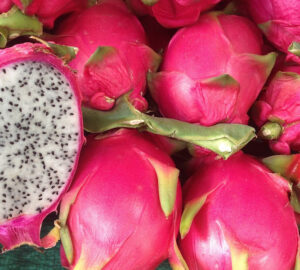Are you eager to savor the taste of homegrown, luscious watermelons? Discover the secrets to successful watermelon care as we delve into essential tips and techniques that will help you cultivate thriving plants and achieve an abundant harvest of delicious, sweet and refreshing fruits in your own backyard.
Watermelon Planting and Care
Here are some useful tips to help hobby gardeners take care of watermelon plants and encourage the growth of beautiful, sweet and large fruits:
Site Selection
Choose a sunny location for planting watermelons, as they require at least 6-8 hours of direct sunlight daily.
Soil Preparation
Watermelons thrive in well-draining soil that is rich in organic matter. Before planting, amend the soil with compost or well-rotted manure to improve its fertility and drainage.
Planting
Sow watermelon seeds or transplant seedlings once the soil has warmed up to at least 70°F (21°C). Plant the seeds or seedlings in mounds or hills, spacing them about 3-4 feet (90-120 cm) apart to provide ample room for growth.

Watering
Adequate water is crucial for the growth of watermelons. Keep the soil consistently moist but not waterlogged. Water deeply once or twice a week, ensuring the water reaches the root zone. Avoid overhead watering to prevent diseases. Drip irrigation or soaker hoses are ideal for delivering water directly to the plant roots.

Mulching
Apply a layer of organic mulch around the watermelon plants to conserve moisture, suppress weeds and maintain an even soil temperature. Straw, grass clippings or wood chips make excellent mulching materials.
Fertilization
Watermelons are heavy feeders and benefit from regular fertilization. Use a balanced, slow-release fertilizer or apply compost or well-rotted manure during planting. Side-dress with a nitrogen-rich fertilizer when the vines start to develop runners and again when the first fruits set.

Pollination
Watermelons require pollination for fruit development. Encourage pollinators, such as bees, by planting flowers nearby. Alternatively, you can hand-pollinate the flowers using a small brush or by transferring pollen between male and female flowers.
Pruning and Training
Watermelon vines can become sprawling, so consider pruning to control their growth and promote airflow. Remove any lateral vines that are not bearing fruit. Additionally, training the vines along a trellis or providing support for the developing fruits can help prevent them from rotting on the ground.

Pest and Disease Control
Monitor your plants regularly for pests like aphids, cucumber beetles or squash bugs. Use organic pest control methods such as insecticidal soaps or neem oil if necessary. To prevent diseases, avoid overhead watering, practice crop rotation and remove any infected plant debris.

Fruit Support
As the watermelons grow larger, you can provide support by placing a cloth sling or mesh netting underneath them and tying it to the trellis or support structure. This helps reduce stress on the vines and prevents the fruit from touching the ground, reducing the risk of rot.
With proper care and attention, you can enjoy delicious, sweet and large watermelons from your garden.

Watermelon Care in Summer
Here are some additional tips specifically related to watermelon care during the summer months:
Adequate Watering
Watermelons have high water requirements, especially during hot summer months. Ensure that the plants receive sufficient water to prevent stress and dehydration. Deep watering is essential, so provide a thorough soak to the soil around the plants, ensuring the water reaches the root zone. Monitor soil moisture levels regularly and increase watering frequency if necessary.

Mulching and Moisture Retention
Mulching is particularly crucial during the summer months to conserve soil moisture and regulate soil temperature. Apply a thick layer of organic mulch around the watermelon plants to help prevent rapid evaporation and maintain soil moisture. This will also help keep the soil cooler during hot spells, benefiting the plants.
Heat Protection
Watermelons thrive in warm weather, but extreme heat can stress the plants and impact fruit development. Protect the plants during heatwaves by providing temporary shade using shade cloth or row covers. This will help shield them from excessive sunlight and heat, reducing the risk of sunburn or scorching.

Timing of Watering
To avoid moisture loss due to evaporation, it is best to water watermelon plants in the early morning or late afternoon. Watering during these cooler parts of the day ensures that the plants have access to moisture when they need it most and reduces water loss through evaporation.
Regular Inspection
Monitor your watermelon plants regularly during the summer months for signs of stress, pests or diseases. Look for wilting leaves, yellowing foliage or signs of insect damage. Early detection allows for prompt treatment and prevents further damage to the plants or fruits.

Harvest Timing
In hot weather, watermelons can ripen more quickly. Keep a close eye on the fruits and harvest them promptly when they are fully ripe. Check for the typical signs of ripeness such as a dull rind color, a yellowish underside and a hollow sound when tapped. Harvesting at the right time ensures optimal flavor and sweetness.
By following these tips and providing appropriate care during the summer months, you can help your watermelon plants thrive and enjoy delicious, juicy fruits at their peak.
Happy gardening!









